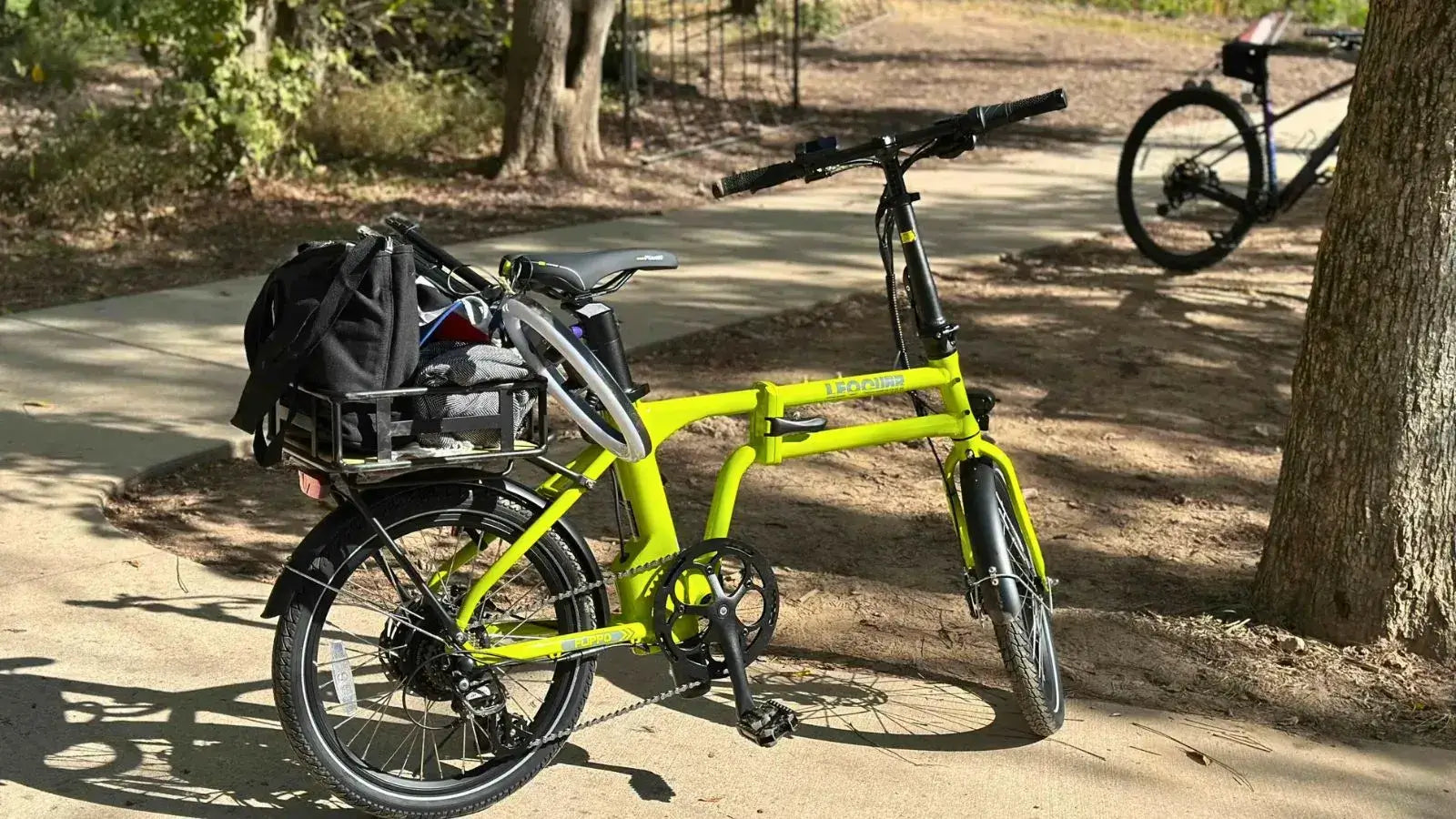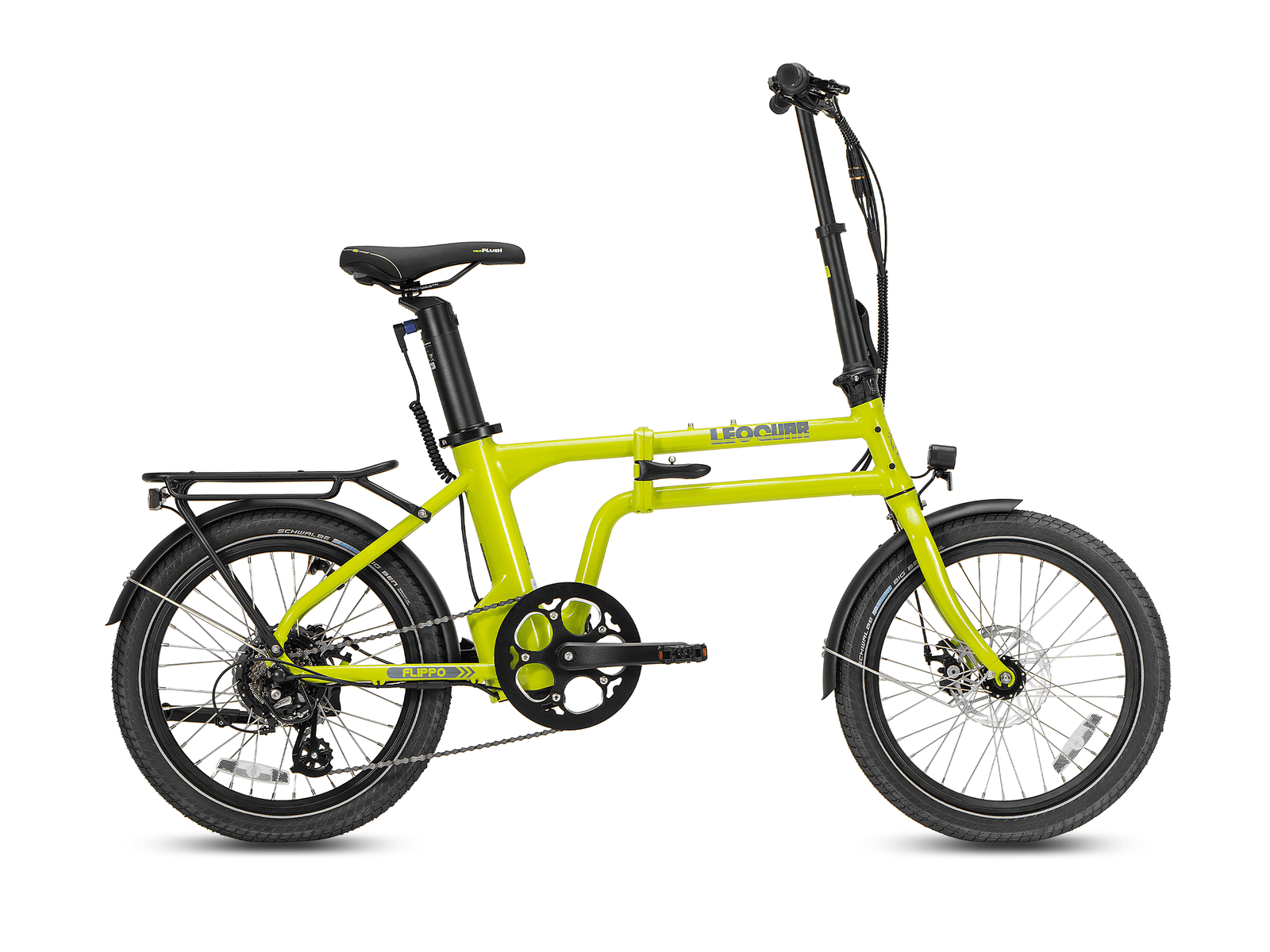
Collapsible E Bike vs Foldable: Key Differences
The Short Answer
When you search for a "collapsible e bike," you're entering a world of terms that mean the same thing. Is there a real difference between a collapsible e bike and a foldable ebike?
In today's market, the direct answer is no. Manufacturers, retailers, and riders use these terms to describe the same thing - an electric bike designed for compact storage and transport.
While "foldable" more accurately describes the common mechanism, the term "collapsible" captures the same end goal. The more important distinction isn't in the name you use but in the engineering behind the fold. The true differences lie in the folding mechanism's design, the resulting folded size and weight, the speed of the process, and the quality of the ride itself. Forget the word choice; focus on the mechanics.
Three Core Compact Mechanisms
To truly understand the compact ebike world, we need to look past marketing terms and into the engineering. We classify these bikes into three main design types, each with distinct advantages and disadvantages.
The Classic Mid-Hinge
This is the design you'll see most often. It features a single, strong hinge in the middle of the main frame tube, allowing the bike to fold in half. This is typically combined with a telescoping seatpost and a folding handlebar stem. It's a straightforward and effective solution. Because this design strikes an excellent balance between manufacturing cost and user convenience, it's found on over 70% of the compact ebikes on the market today.
Pros: Fast and easy folding process, often taking less than 30 seconds. The mechanism is simple, leading to greater reliability and a more accessible price point.
Cons: The folded shape is often long and somewhat awkward. It's more of a "flattened" bike than a compact package, which can be hard to carry or fit into tight, square spaces.
The Multi-Joint System
Pioneered by brands like Brompton and adopted by innovative ebike companies like GoCycle, this system uses multiple hinges and pivot points. The rear wheel often swings under the frame, and the front wheel folds alongside, creating a much smaller, more regular, and often self-standing package. This is a design prized by multi-modal commuters who need the smallest possible footprint.
Pros: Achieves the most compact and regularly shaped folded size, resembling a small suitcase. This makes it far easier to carry onto public transit, store under a desk, or tuck into a closet.
Cons: The folding process is more complex and can take longer to master. The intricate engineering and tighter tolerances required for multiple pivot points lead to a significantly higher manufacturing cost and retail price.
The "True Collapsible" Design
This is the rarest category and adheres most closely to the literal definition of "collapsible." Instead of just folding, these bikes may require partial disassembly or use unique telescoping frames to shrink down. This might involve removing the front wheel, using quick-release levers on multiple frame parts, or other non-hinge-based methods.
Pros: Can achieve extremely lightweight designs or specific flat-pack shapes that other methods cannot. Ideal for long-term storage or situations where absolute minimum weight is the top priority.
Cons: The setup and breakdown process is by far the slowest, often taking several minutes. This makes it impractical for daily commuters who need to transition quickly between riding and carrying.
Comparing The Trade-Offs
Choosing the right compact ebike involves balancing competing priorities. What you gain in portability, you might sacrifice in ride quality or price. The mechanism is the root of these trade-offs.
Mechanisms at a Glance
| Feature | Classic Half-Fold | Multi-Joint System | True Collapsible |
|---|---|---|---|
| Portability | Good | Excellent | Varies |
| Folding Speed | Very Fast (10-30s) | Fast (20-60s) | Slow (1-5 mins) |
| Folded Size | Moderate, often long | Most Compact, boxy | Varies, often flat |
| Ride Quality | Good to Excellent | Good | Fair to Good |
| Structural Integrity | Generally strong | Very strong | Dependent on design |
| Price Point | $-$$ | $$ - $$$ | $-$$$ |
Deeper Factor Analysis
Weight and Portability
Portability is more than just a folded size; it's about weight. This is where the purpose of the fold becomes critical.

An ultra-light carbon fiber collapsible e bike can weigh as little as 30 lbs (13.6 kg), making it genuinely easy to carry up a flight of stairs. In stark contrast, a fat-tire folding ebike, often marketed to RV owners and adventurers, can tip the scales at 70 lbs (32 kg) or more.
While it technically folds, its purpose is storage in a vehicle, not being carried on a train. A bike over 50 lbs is a significant burden for most people to carry for any distance.
Ride Quality and Wheel Size
The ride feel of a collapsible e bike is largely dictated by its wheel size. You'll typically find wheels in 16-inch, 20-inch, or 24-inch diameters.
16-inch wheels: Offer maximum compactness and agility, perfect for weaving through dense urban environments. However, as experts note, smaller wheels can lead to a bumpier ride on rough surfaces because they have a higher angle of attack on bumps and potholes.
20-inch wheels: This is the most common size and represents the "sweet spot" for many riders. It provides a good balance of nimble handling, a reasonably smooth ride, and a still-compact fold.
24-inch wheels: Less common, but they provide a ride quality that feels much closer to a full-sized bike. They roll over imperfections more smoothly, offering greater stability at speed, but this comes at the cost of a larger folded package.
Finding Your Perfect Match
To simplify your choice, we developed a "Portability vs. Performance" matrix. Imagine a graph where the vertical Y-axis is Portability (low weight, small fold) and the horizontal X-axis is Performance (ride stability, power, range, all-terrain capability). Your ideal bike lies in the quadrant that best matches your needs.
Quadrant 1: The Ultimate Commuter
Position: High Portability, Moderate Performance
Characteristics: These are the featherweights of the ebike world. They prioritize a low weight (often under 40 lbs) and the smallest possible folded size. They typically use 16-inch or smaller wheels and multi-joint folding systems. Performance is geared for urban flats and moderate hills, not high speeds or long distances.
Best For: The daily multi-modal commuter. If your journey involves carrying your bike onto a train, up to your third-floor apartment, or tucking it under your office desk, this is your quadrant. You value the ease of transport above all else.
Quadrant 2: The All-Rounder
Position: Good Portability, Good Performance
Characteristics: This is the heart of the market, where most buyers find their match. These bikes, typically using a classic mid-hinge design and 20-inch wheels, offer a fantastic compromise. They are light enough to be manageable for occasional lifting but robust enough for comfortable, longer rides. They have capable motors and batteries that can handle varied commutes and weekend leisure trips.
Best For: The versatile urbanite or suburban dweller. You need a bike that can handle a 10-mile commute, a trip to the grocery store, and a leisurely park ride on Saturday. You might need to put it in your car trunk or store it in a hallway, but you aren't carrying it every single day.
Quadrant 3: The Rugged Adventurer
Position: Low Portability, High Performance
Characteristics: These are the heavy-hitters. Often equipped with 4-inch wide fat tires, powerful 750W motors, and even front or full suspension systems, these bikes are built for capability, not convenience. Their weight (60-75 lbs) makes them very difficult to carry. The "fold" is purely a space-saving feature for transport in a large vehicle.
Best For: The RV traveler, boater, or car-camping enthusiast. You want an ebike that can tackle gravel paths, dirt trails, and sandy shores. Portability means fitting it in your SUV or RV storage bay, not carrying it on a bus.
Our Experience: We recently took a 68-lb fat-tire collapsible e bike on a weekend camping trip. Folding it allowed two bikes to fit snugly in the back of an SUV, something impossible with full-sized bikes. The performance on campground gravel roads and light trails was phenomenal. However, the trade-off was clear.
Lifting the bike in and out of the vehicle was a two-person job, and the thought of carrying it any distance was out of the question. It perfectly defines the "storage-focused" fold. This is a portable adventure vehicle, not a portable commuter.
Frequently Asked Questions
Q: What's the main difference between a collapsible e bike and a foldable ebike?
A: There's no real difference between these terms. Manufacturers and retailers use "collapsible" and "foldable" interchangeably to describe electric bikes that can be folded or broken down for compact storage and transport.
Q: How long does it take to fold most electric bikes?
A: It depends on the folding mechanism. Classic mid-hinge designs typically fold in 10-30 seconds, multi-joint systems take 20-60 seconds, and true collapsible designs requiring partial disassembly can take 1-5 minutes.
Q: What wheel size is best for a folding electric bike?
A: 20-inch wheels are the most popular "sweet spot," offering good balance between compact folding and ride quality. 16-inch wheels are more compact but bumpier, while 24-inch wheels ride smoother but fold larger.
Q: How much should a portable electric bike weigh?
A: For true portability where you'll carry the bike regularly, look for models under 40 lbs. Bikes over 50 lbs become difficult for most people to carry any distance, though they may still be useful for vehicle storage.
Q: Are folding electric bikes as reliable as regular ebikes?
A: Quality folding electric bikes with well-engineered hinges can be just as reliable as regular ebikes. The key is choosing reputable brands with robust folding mechanisms and proper maintenance of the hinge points.









































Leave a comment